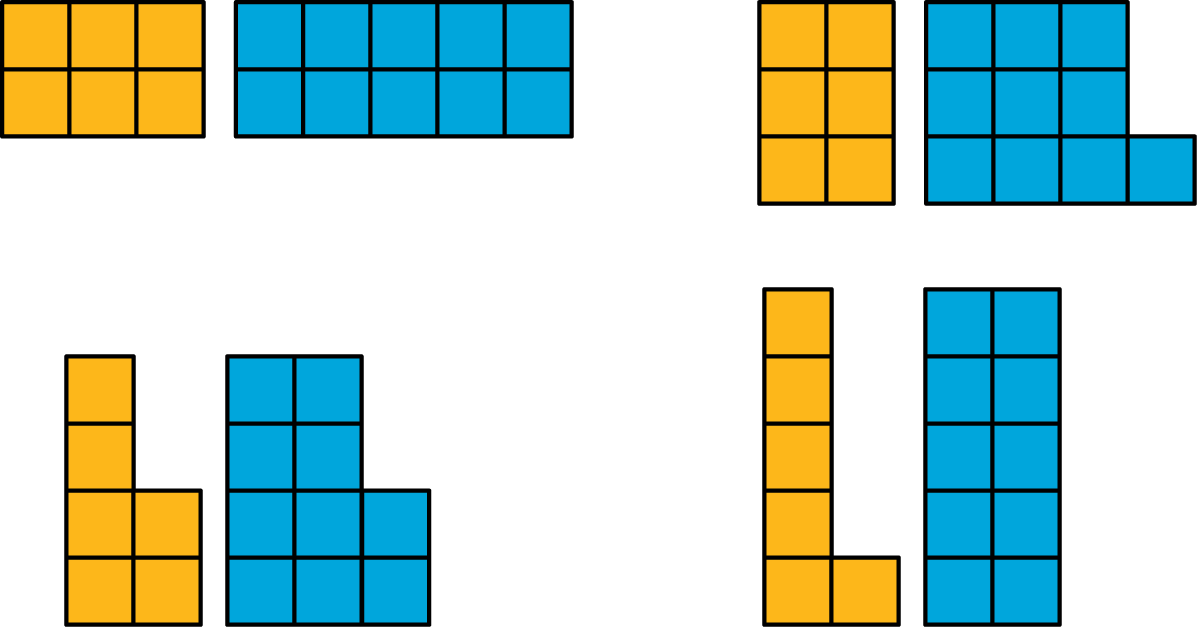16.1: Figures Made of Squares
How are the pairs of figures alike? How are they different?

Let’s use factors to solve problems.
How are the pairs of figures alike? How are they different?

Diego is preparing brownies and cookies for a bake sale. He would like to make equal-size bags for selling all of the 48 brownies and 64 cookies that he has. Organize your answer to each question so that it can be followed by others.
A rectangular bulletin board is 12 inches tall and 27 inches wide. Elena plans to cover it with squares of colored paper that are all the same size. The paper squares come in different sizes; all of them have whole-number inches for their side lengths.
A school has 1000 lockers, all lined up in a hallway. Each locker is closed. Then...
A factor of a whole number n is a whole number that divides n evenly without a remainder. For example, 1, 2, 3, 4, 6, and 12 are all factors of 12 because each of them divides 12 evenly and without a remainder.
A common factor of two whole numbers is a factor that they have in common. For example, 1, 3, 5, and 15 are factors of 45; they are also factors of 60. We call 1, 3, 5, and 15 common factors of 45 and 60.
The greatest common factor (sometimes written as GCF) of two whole numbers is the greatest of all of the common factors. For example, 15 is the greatest common factor for 45 and 60.
One way to find the greatest common factor of two whole numbers is to list all of the factors for each, and then look for the greatest factor they have in common. Let’s try to find the greatest common factor of 18 and 24. First, we list all the factors of each number.
Factors of 18: 1, 2, 3, 6, 9,18
Factors of 24: 1, 2, 3, 4, 6, 8, 12, 24
The common factors are 1, 2, 3, and 6. Of these, 6 is the greatest one, so 6 is the greatest common factor of 18 and 24.
A common factor of two whole numbers is a factor that they have in common. For example, 5 is a common factor of 15 and 20.
The greatest common factor (sometimes written as GCF) of two whole numbers is the greatest of all of the common factors. For example, 15 is the greatest common factor for 45 and 60.